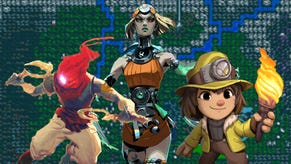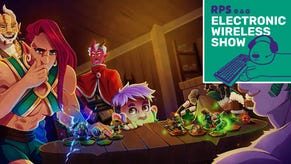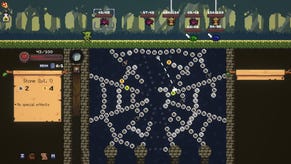How Slay The Spire saved digital card games from stagnation
"The constraints of the game force you to explore and be creative, and that's good."
“To be a good designer, you have to have very, very strong opinions,” says Slay The Spire design lead Anthony Giovannetti. “Show me a game designer who gives a thumbs-up to most things, and I suspect that’s probably someone who doesn’t have a very good game design sense. I want someone who really, really loves and hates things, and gives you reasons why.”
It’s a trait which Giovannetti has in common with his Megacrit co-founder, Casey Yano, and has possessed ever since he was a kid growing up in Woodinville, 30 minutes outside Seattle. It’s matched by a competitiveness that first emerged in Warhammer 40,000 tournaments as a teen. Before he was old enough to drive, Giovannetti would ride his bike to the local game store and play until the early hours of the morning.
“I was kind of a little shit back then,” he says. “I was young, but I was better than most of the actual adults, and I think they always resented being beaten by a kid, or at least that was how I interpreted it. And I actually really liked that.”
Giovannetti’s parents vetoed Dungeons & Dragons on the grounds of “leftover Satanic Panic nonsense”. And so a potential avenue of cooperative gaming was shut off in favour of further competition. Giovannetti fell hard for Magic: The Gathering, and then Richard Garfield’s follow-up Cyberpunk card game, Netrunner.
“There’s a lot more complexity and room for decisions to matter when you’re playing Netrunner,” he says. “Two players can sit down with the same hand and play it totally differently, which is pretty rare in Magic.” Netrunner added a layer of bluffing and secret agendas, and so reading people became another skill to master.
Giovannetti and his friends, one of whom was a Netrunner world champion two years running, would chat tactics in a shared Skype channel. Those discussions culminated in a strategy-focused fansite and forums, StimHack, which still runs today. It’s perhaps unsurprising that all this high-level thinking about the mechanics and limitations of CCG design would eventually tip over into amateur game development.
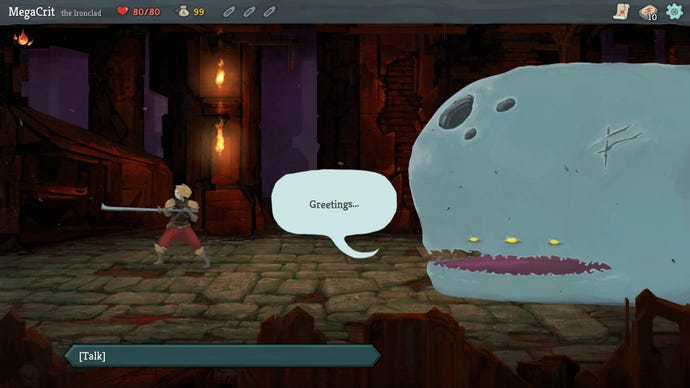
Giovannetti and Yano met at college, where they made an ambitious Ikaruga-alike in Adobe Flash that was “hot trash”. Then, following a hiatus, came Slay The Spire. Armed with a design document, the pair quit their jobs. Joining an established game studio didn’t appeal to two young men with strong opinions. “If I was gonna grind for someone else,” Giovannetti says, “I could just do any other kind of software job.”
Despite the tournament background, Giovannetti and Yano decided not to court the world of competitive multiplayer. Picking a fight with life-swallowing hobbies like Magic or Hearthstone seemed like a “fool’s game”.
“Trying to make a game that would compete on that level of scale doesn’t make any sense for an indie,” Giovannetti says. “But a single-player game with a small playtime, that’s something a Hearthstone streamer could play and enjoy in between, and it’s complementary.”
The next brainwave was to splice cards with the roguelite genre exemplified by Spelunky, Dead Cells and FTL. “My favourite thing in Magic was drafting,” Giovannetti says. “You sit down, you don’t have a deck already, and you draft cards to build your deck. The roguelike framework gives you an excuse to always be drafting. It’s a good mechanical justification for why you don’t always have the same deck.”

Multiplayer CCGs like Hearthstone implicitly discourage creative experimentation; to stay competitive, players feel compelled to look up ideal decks online rather than build their own from scratch. “You’re just playing the meta until the next patch or expansion,” Giovannetti says. “And that’s fine, that’s fun. But I don’t think that’s card games at their best, for me.”
By contrast in Slay The Spire, you start each session with a set of cards, which can be honed and steered as you journey up the tower - picking up and discarding abilities as you go. “The constraints of the game force you to explore and be creative, and that’s good,” Giovannetti says. “You see some new players say, ‘Why can’t I just pick the cards I want?’ And you would always do the same thing. There would be no actual interest. You’d play the game once and then you’d be bored of it.”
Another key breakthrough was the intent system, which allows players to see precisely what the impact of their enemy’s next attack will be, and attempt to counter it in advance. “It made a lot of sense and tied everything together,” Giovannetti says. “It gave the player perfect information, and expanded the strategy space a lot.”
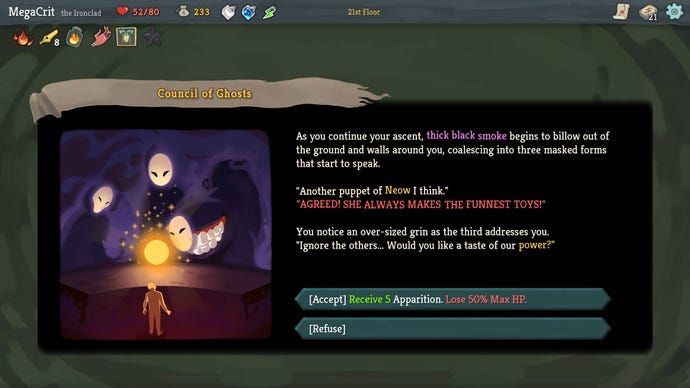
As a player, Giovannetti likes to be informed. “One of my gripes in games is when I get to the equivalent of an event choice in Slay The Spire and I have no idea what the outcome is,” he says. “I’ve gotta go and Google the result, and it always feels like a complete failure of game design.”
As these ideas began to coalesce, Mega Crit found that Slay The Spire was intensely replayable. A nascent fanbase enabled them to whittle away at their design in early access, as if drafting the dream deck based on player feedback. All that testing inspired countless changes, and resulted in a very different, much-improved game - swelling with hundreds of cards and relics. But it was also a gruelling period, in which 80+ hour work weeks became the norm.
“We were doing weekly updates, which is kind of insane,” Giovannetti says. “Nobody does. I’m glad we did it, but I don’t know that I want to do that intensity again. You kind of feel like you're grinding up your soul to make something really amazing.”
It’s an intriguing choice of simile. Upon beating a boss in Slay The Spire, players are given the option of picking up a relic - a cracked crown, a philosopher’s stone, a cursed key - which will grant them a powerful boon yet come at a permanent cost. Baked into the game is the belief that great achievements come with terrible sacrifice.
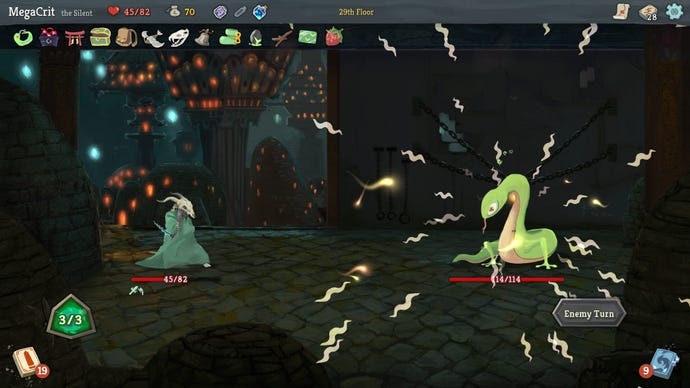
Slay The Spire emerged from early access in the first days of 2019, and has inspired rare devotion since among fans, many of whom still play daily. Though Mega Crit had avoided going toe-to-toe with Hearthstone, it transpired they’d made a hobby game after all. And over time, as more Spire-alikes started to appear, it became apparent that game developers especially connected with Mega Crit’s work. “In Slay The Spire, we have no narrative,” Giovannetti points out. “We have background lore and fluff, but we jump you right in: ‘Here’s mechanics, go play with them, have fun.’ Probably that appeals to the kind of people who get into game design.”
Like League Of Legends and Dark Souls, Slay The Spire quickly became part of the tapestry of game design, admired and riffed on in a variety of genres. “It’s surreal,” Giovannetti says. “It’s nothing I could have expected. I’m happy about it, but it always hits kinda weird, I still haven’t gotten used to it. I don’t want it to go to my head and be insufferable.”
Still, he can’t help but have strong opinions. “I try to play most of them,” he says. “But sometimes I see a decision to change something in a way that I think is going backwards from what we did in Spire. And I’m like, ‘Why? We showed you why this was best!’ But it’s always interesting to see how things evolve.”
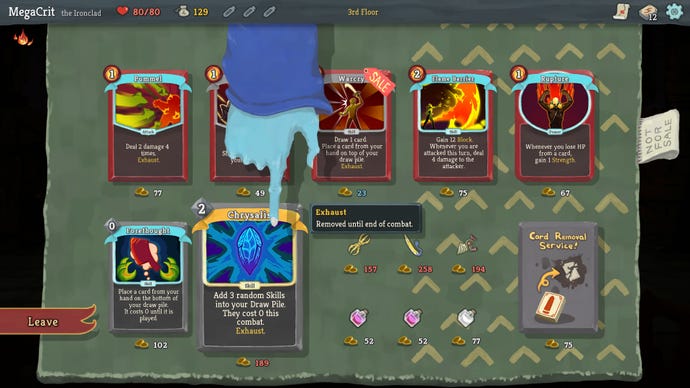
Today, Mega Crit have resources far beyond their expectations, and an audience that holds their creations in high esteem. Yet they're still to attempt their own Hearthstone, the competitive game to rival the obsessions of Giovannetti’s youth. “I could see myself working on that,” he says. “I think it would be a lot of fun, to be honest. But if I was to make something that competed with Hearthstone or whatever, we would need a lot more people.”
As Mega Crit’s staff gently grows into double figures, they're still adjusting to new relationship dynamics. “When Casey and I were working together, just the two of us, we were always talking,” Giovannetti says. “We’re good friends, we think alike, the communication is perfect. And we have no problems telling each other that an idea sucks and we should throw it away. But once you start to expand, everything’s different, and being able to communicate really well is incredibly important.” Just like Spire players, new employees need a helping hand - an intent system of sorts - to understand what the boss is thinking.
For a competitive multiplayer game on the scale of Hearthstone, Giovannetti would rather work with an external team as a designer-at-large, in the mode of Super Smash Bros. creator Masahiro Sakurai. “Maybe that’s something I’ll do in my future,” he says. “I’m not opposed to something like that at all.” For now, the plan is to keep Mega Crit small for their next project. Because as Giovannetti puts it, management is really hard. “I think I’m good at game design,” he says. “I’m maybe an OK manager. It’s not my competitive advantage.”



